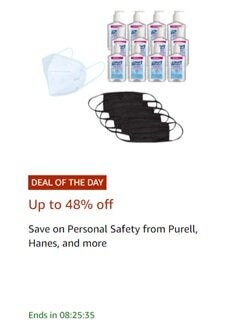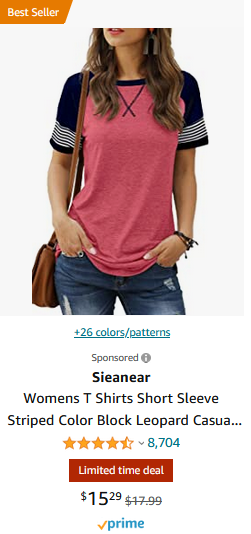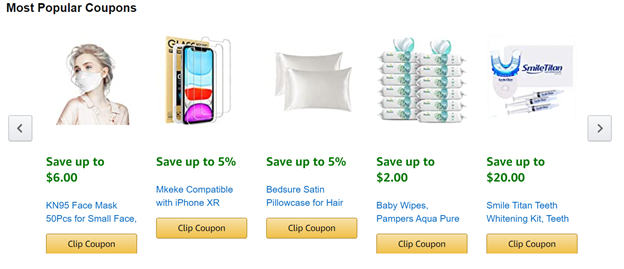Amazon offers an array of deals and promotions that brands can leverage to incentivize sales. Consumers have been trained to expect deals, especially around key tentpole events, but they are a tool that can be deployed year-round.
With so many choices, figuring out which promotions to use and when can be confusing. Of course, Amazon is is almost always a pay-to-play environment — meaning these deals and promotions have a cost associated with them.
This blog post will review the most common types of promotions on Amazon and explain the key benefits and best practices of each one.

Key Benefits of Amazon Promotions
- Incentivize consumers to buy products
- Promotions rotate through high-impact real estate, giving brands amplified visibility on the Homepage, Deals page, and Coupons page.
- Increased traffic and glance views (PDP views)
- Improved search rankings
- With increased sales, there is potential to generate increased reviews (New Products, in particular, can benefit here)
- Co-marketing: Amazon amplifies promotions through its digital marketing channels including daily emails, the mobile app, Twitter, and Facebook advertising. Tentpole events like Back to School, Holidays, and Prime Day are additionally marketed through broader channels like TV & print.
Types of Amazon Promotions
Different promotion types work differently for various categories and consumers. We've broken down the types of promotions to help you navigate the space if your products qualify. (For your products to qualify they must first meet Amazon's retail readiness requirements.) Click on the images to enlarge.
Prime Day Deal Options
- Prime Exclusive Discount (Seller): Exclusive to Prime members for Prime shipping eligible FBA products. The product offer will display a discounted price with the regular price crossed out and will pull in a Prime Day Deals badge for your product across search, detail pages, cart, and checkout.
- Prime Day Promotion (Vendor): On Prime Day, these offers are featured on the Amazon Prime Day and Today’s Deals pages. “Prime Day Deal” badging also pulls through to improve discoverability. These deals will be a point-of-sale discount that merchandises promotions on product detail pages and cart widgets. Prime Day Promotions are applied at checkout and are exclusive to Prime members.

Deal of the Day (DOTD)
These promotions last 24 hours (or until stock runs out) and offer badges to improve findability. They are featured prominently on the Amazon Today’s Deals page and can help increase your sales velocity. To qualify, products must have a minimum rating of 3 stars, need to be Prime shipping, and need the initial recommendation from Amazon. Previous sales history will influence the ranking on the "today's deals" page, so we recommend using top-selling ASINs for this type of promotion.

Lightning Deals
A Lightning Deal is a version of DOTD but is only available for a short window of hours as a flash sale. The Lightning Deal applies only to one product but can include color and size variations.
Customers will find Lightning Deals on the “Today’s Deals” page, where a countdown timer and tracker create urgency to complete the sale. The deal ends when the time expires or when all available promotional discounts are claimed. Brands can sell the same amount of product they would normally sell in a week in just a couple of hours when using Lightning Deals.

Prime Early Access Deals
Brands can offer a 30-minute window to incentive Prime members to claim Lightning deals before they are offered to the public. This can be a great way to target Prime members specifically with your product and incentive them with an exclusive window to your deal.

7-Day Deals (Sellers)
Exactly how it sounds. 7-Day Deals have a “limited time deal” badge in search results, driving more visibility for sellers. This longer duration can be used to increase your overall traffic.

Best Deals & Hero Best Deals (Vendors)
These promotions can drive traffic to an entire catalog and can create awareness of one or several brands surrounding an event. Hero Best Deals are featured at the top of the event page and run between two to seven days.

Buy X, Get Y (BXGY)
These paid merchandising placements increase the visibility of your product by pairing it with another product or featuring it in the “best value” section of each PDP.
This promotion is a tactic to increase basket size and can be effective when pairing one product with another that is a natural add-on for the customer. The higher the sales ranking of your pairing, the more likely customers will see the promotion.

Coupons
Vendor Powered Coupons (VPCs) and Seller Central coupons come in the following variety: percentage off, dollars off, BOGO, free shipping, giveaway sweepstakes, and even social media promo codes. To qualify, the discount must be a minimum of 5% below the featured offer price. Coupons can also stack with other promotions.
When a consumer clicks on the coupon, it is added to their basket, and the discount is automatically applied at checkout. Brands only pay fees when the coupon is redeemed, and it’s important to note that coupons have an expiration date. Brands can also create a Coupon Landing Page (CLP) and drive off-site media to the page for incremental traffic and improved product ranking.

Coupons are especially helpful for gaining traction for new products and can be used on up to 50 ASINs for up to three months. They are listed within search results, on the product detail page, and on the Amazon vouchers page with badges that make them easy to identify.




